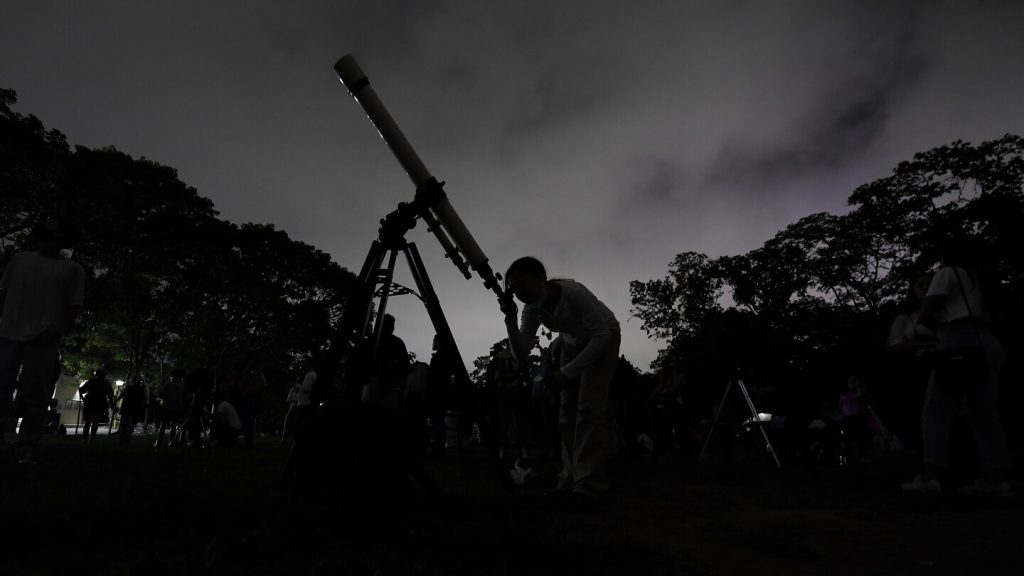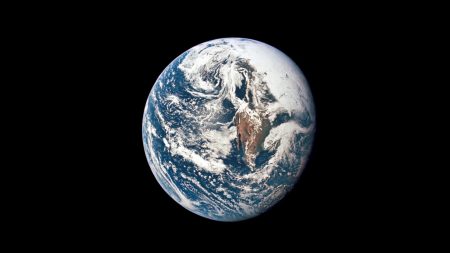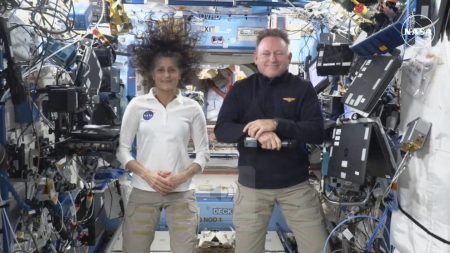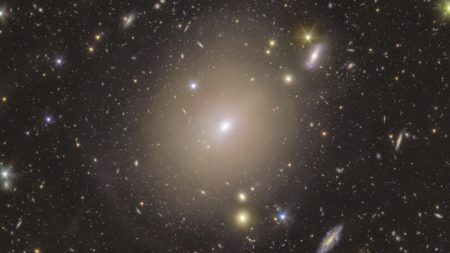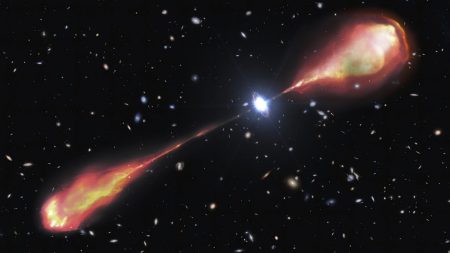The Ursid meteor shower, the final celestial spectacle of the year, graces the night sky just days before Christmas, peaking on Sunday. Although typically less dazzling than its predecessor, the Geminids, the Ursids possess an element of surprise, capable of producing bursts of activity far exceeding their usual modest display. Under optimal viewing conditions, the Ursids typically offer a sprinkling of 5 to 10 meteors per hour. However, historical records reveal their potential for dramatic outbursts, with instances in 1945 and 1986 witnessing a surge of up to 100 meteors per hour. This inherent unpredictability adds an element of excitement for skywatchers, as predicting the intensity of any given year’s shower remains a challenge. Like most meteor showers, the Ursids originate from the debris trail left by a comet, in this case, Comet 8P/Tuttle. No specialized equipment is necessary to witness this celestial event, making it accessible to all who wish to gaze upon the heavens. However, the nearly 60% full moon on the peak night will introduce some light pollution, potentially obscuring fainter meteors. The viewing window for the Ursids extends until December 26th, offering ample opportunity to catch a glimpse of these fleeting streaks of light. The next meteor shower, the Quadrantids, will illuminate the skies with its peak on January 3rd.
Meteor showers, captivating displays of celestial fireworks, arise from the remnants of comets as they journey through the solar system. Comets, often described as “dirty snowballs,” are composed of ice, dust, and rocky material. As they approach the sun, heat causes the ice to sublimate, transforming directly from solid to gas, releasing a trail of dust and debris into space. This debris field, known as a meteoroid stream, orbits the sun along the comet’s path. When Earth’s orbit intersects a meteoroid stream, the particles enter our atmosphere at high speeds, typically tens of kilometers per second. The friction generated by their interaction with the atmospheric gases causes the particles to heat up intensely, creating the bright streaks of light we perceive as meteors, often referred to as “shooting stars.” The Ursids, therefore, are the result of Earth’s annual passage through the debris field left behind by Comet 8P/Tuttle.
Comet 8P/Tuttle, the progenitor of the Ursid meteor shower, is a periodic comet with an orbital period of approximately 13.6 years. It was independently discovered by Horace Parnell Tuttle in 1858 and again by Pierre Méchain in 1790. The comet’s relatively short orbital period means it returns to the inner solar system with some regularity, replenishing the supply of dust and debris that gives rise to the Ursids. The Ursids are named after the constellation Ursa Minor, also known as the Little Dipper, from which the meteors appear to radiate. This point in the sky is known as the radiant. Locating the radiant can enhance the viewing experience, as meteors will appear to streak outward from this central point.
Observing the Ursids, or any meteor shower, can be a rewarding experience, offering a connection to the vastness of space. To maximize your chances of seeing these celestial wonders, find a dark location away from city lights, allowing your eyes to adapt to the darkness for at least 20 to 30 minutes. No telescopes or binoculars are required; in fact, they can hinder your view as meteor showers are best observed with the naked eye, allowing for a wider field of view. Dress warmly, especially if observing during the winter months, and bring a comfortable chair or blanket to lie on. Patience is key, as meteor showers are not predictable events, and the frequency of visible meteors can vary. Be prepared to spend some time under the stars, allowing your eyes to scan the sky for those fleeting moments of brilliance.
While the Ursids may not boast the same prolific display as some other meteor showers, their unpredictability and the possibility of unexpected outbursts make them an intriguing spectacle for skywatchers. The relatively low number of anticipated meteors under normal conditions, coupled with the interference from the moon’s light, necessitates patience and a keen eye. However, the reward of witnessing a bright meteor streaking across the dark sky is worth the effort. The Ursids offer a unique opportunity to connect with the cosmos, reminding us of the dynamic nature of our solar system and the constant dance of celestial objects.
The Ursid meteor shower, a subtle yet captivating celestial display, provides a fitting end to the year’s astronomical calendar. While often overshadowed by more prominent meteor showers, the Ursids possess a charm of their own, offering a chance to appreciate the beauty of the night sky and the wonders of our solar system. The inherent unpredictability of the Ursids, with the potential for unexpected surges in meteor activity, adds an element of excitement and anticipation for skywatchers. While the bright moon may pose a challenge, it doesn’t diminish the allure of this celestial event, inviting observers to embrace the darkness, look upward, and witness the fleeting beauty of meteors streaking across the canvas of the night.




